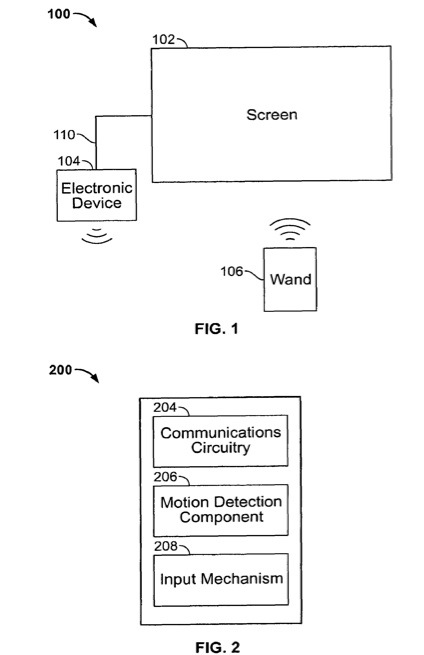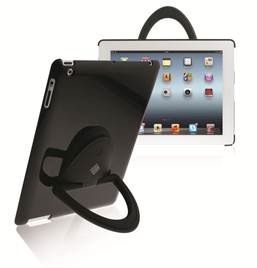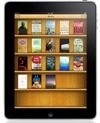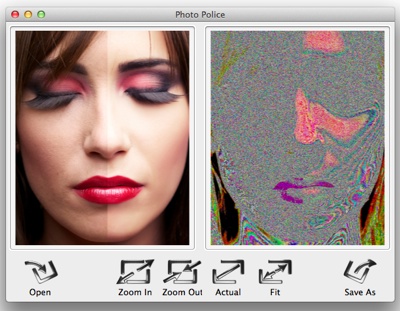Could this have anything to do with the rumored “iTV” (an Apple-branded HDTV)? An Apple patent (number 8194037) for a has appeared at the U.S. Patent & Trademark Office.
An electronic device associated with a remote wand controlling the operations of the electronic device is provided in the patent. The wand may include a motion detection component operative to provide an output reflecting the motion of the wand to the electronic device, such that the movements of a cursor displayed by the electronic device may be related to the output of the motion detection component. The wand may also include an input mechanism operative to receive user inputs.
Using the input mechanism, the wand may detect a user’s inputs and direct the electronic device to zoom or scroll displayed objects. The electronic device may display a screen saver by which the user may select particular media items for playback while remaining in the screen saver mode. In some embodiments, the electronic device may display video with a scroll bar that includes a preview window of the video.
Here’s Apple’s background and summary of the invention: “Some existing media systems may be controlled using a variety of different input mechanisms. For example, some media systems may be controlled by a user providing inputs directly on an interface of the media system (e.g., by pressing buttons incorporated on the media system, or by touching a touch-screen of the media system).
“As another example, some media systems may be controlled by a user providing inputs remotely from the media system (e.g., using a remote controller). Some remote controllers may include one or more buttons that the user can press to direct the media system to perform one or more operations. The buttons may be operative to automatically perform one or more media system operations, or the buttons may be operative to select options displayed on-screen.
“In some embodiments, some remote controllers may provide the user inputs associated with the one or more buttons to the media system using a short-range communications protocol, such as, for example, infrared or radio frequency protocols. To ensure that the user input is properly received, the user may point the remote controller to a receiver of the media system to transmit the user input.
Using these mechanisms to provide inputs to the media system, the user may provide inputs by pressing buttons with their fingers, or by moving their fingers across or on the mechanisms. Although such mechanisms may be effective, they may also be inefficient and non-intuitive, which may sometimes lead to frustration. A media system in which a user may control a media application operation by moving a wand is provided.
“The media system may include an electronic device, a screen, and a wand. The user may interact with one or more media applications implemented on the electronic device using the wand. The wand may include any suitable components for providing instructions to the electronic device. For example, the wand may include a motion detection component providing outputs reflecting the movements of the wand to the electronic device.
“As another example, the wand may include an input mechanism for receiving inputs from the user, and operative to provide the received inputs to the electronic device. The input mechanism may include any suitable input mechanism, including for example an input mechanism operative to detect movements of a user’s finger (e.g., a touch screen, touchpad or touch strip).
“The electronic device may perform any suitable operation in response to receiving an output (e.g., generated by a motion detection component) or input (e.g., received from an input mechanism) from the wand. In some embodiments, the user may control the position of a cursor displayed on the electronic device screen by moving the wand. In response to receiving corresponding outputs from the motion detection component, the electronic device may displace the cursor. In some embodiments, the user may wish to re-center the cursor.
“To do so, the user may select a centering option displayed on screen, provide a particular input using the input mechanism, or move the wand in a particular manner (e.g., swing the wand a particular number of times) to direct the motion detection component to provide an output associated with centering the wand to the electronic device. In some embodiments, the electronic device may detect when the wand is moving unintentionally (e.g., due to hand drift or the wand falling) and may automatically center the cursor or ignore initial subsequent wand movements to overcome the hand drift.
“When an object is displayed by the electronic device, the user may zoom the display to access a more detailed view of the object. The user may provide the zooming instruction using any suitable approach. In some embodiments, the user may provide a zooming input using the input mechanism of the wand. For example, the user may slide a finger across the input mechanism to direct the electronic device to zoom the displayed object. If several objects are displayed and zoomed, the electronic device may change the position of the objects on the screen to maintain the ordering of the objects.
“The user may also scroll several displayed objects. In some embodiments, the user may provide different instructions to scroll the objects in different manners. For example, the user may provide a first scrolling instruction to perform a fine scroll, and a second scrolling instruction to perform a coarse scroll. As another example, the user may provide a first instruction to scroll displayed objects and a second instruction to scroll through categories of objects.
“In some embodiments, the user may provide the first and second instructions by providing different inputs on the same input mechanism. For example, the user may slide a finger on the input mechanism along a first axis to provide the first instruction, and slide a finger on the input mechanism along a second axis different than the first to provide the second instruction.
“The electronic device may use any suitable approach for receiving textual inputs from the user. For example, the electronic device may display a keyboard with selectable keys. The user may place a cursor over a key and provide a selection instruction to enter the selected key in a text window. To access different keys (e.g., from a display of letters to a display of numbers and characters), the user may provide any suitable instruction to the electronic device.
“For example, the user may select a displayed option, or the user may provide an input using the input mechanism of the wand (e.g., slide the user’s finger across the input mechanism). In some embodiment, the input provided for zooming objects and for changing the keys displayed in a keyboard may be the same or substantially the same.
“The user may control the playback of media using any suitable approach. In some embodiments, in response to receiving a user instruction to control the playback of a media item, the electronic device may display a playback scroll bar that includes an indicator. The user may move the indicator along the scroll bar to change the current playback position of the media. If the media includes video or images, the indicator may include a video region.
“As the user moves the indicator, the electronic device may display a video frame associated with the current position of the indicator in the video region (e.g., and roughly corresponding to the playback position of the media and of the location of the indicator on the scroll bar). To reduce the resources used to display images in the video region, the electronic device may display low resolution video frames in the video region.
“The electronic device may enable or access a screen saver mode in response to determining that the user has not provided inputs before a period of time lapsed. In some embodiments, the electronic device may provide an interactive screen saver. For example, the electronic device may display several selectable images, which may move or float across the display. In response to receiving a user selection of an image, the electronic device may display several listings for media items associated with the selected image. The user may then select a displayed listing to direct the electronic device to play back the selected media item associated with the selected listing without disabling or exiting the screen saver mode.”
Duncan R. Kerr and Nicholas V. King are the inventors.






